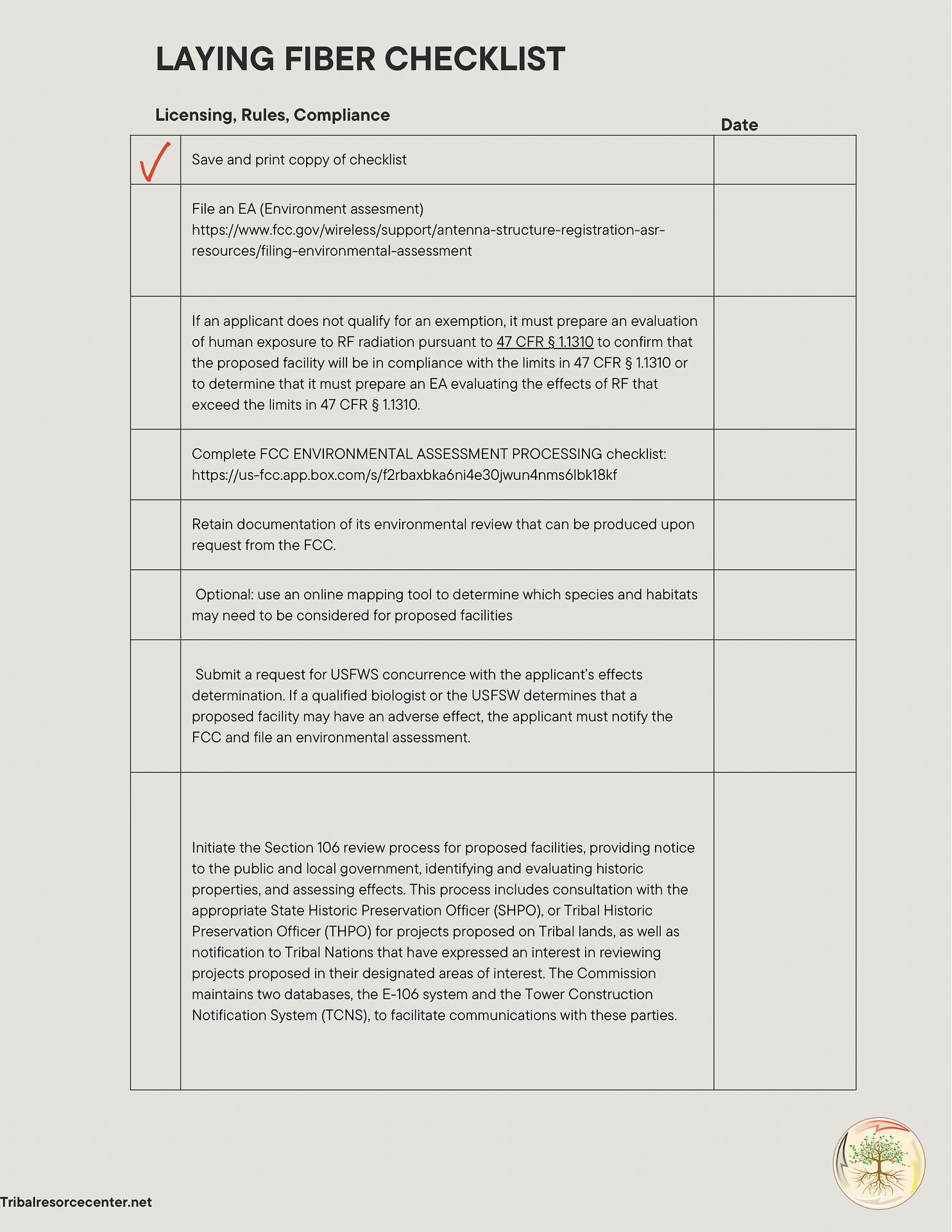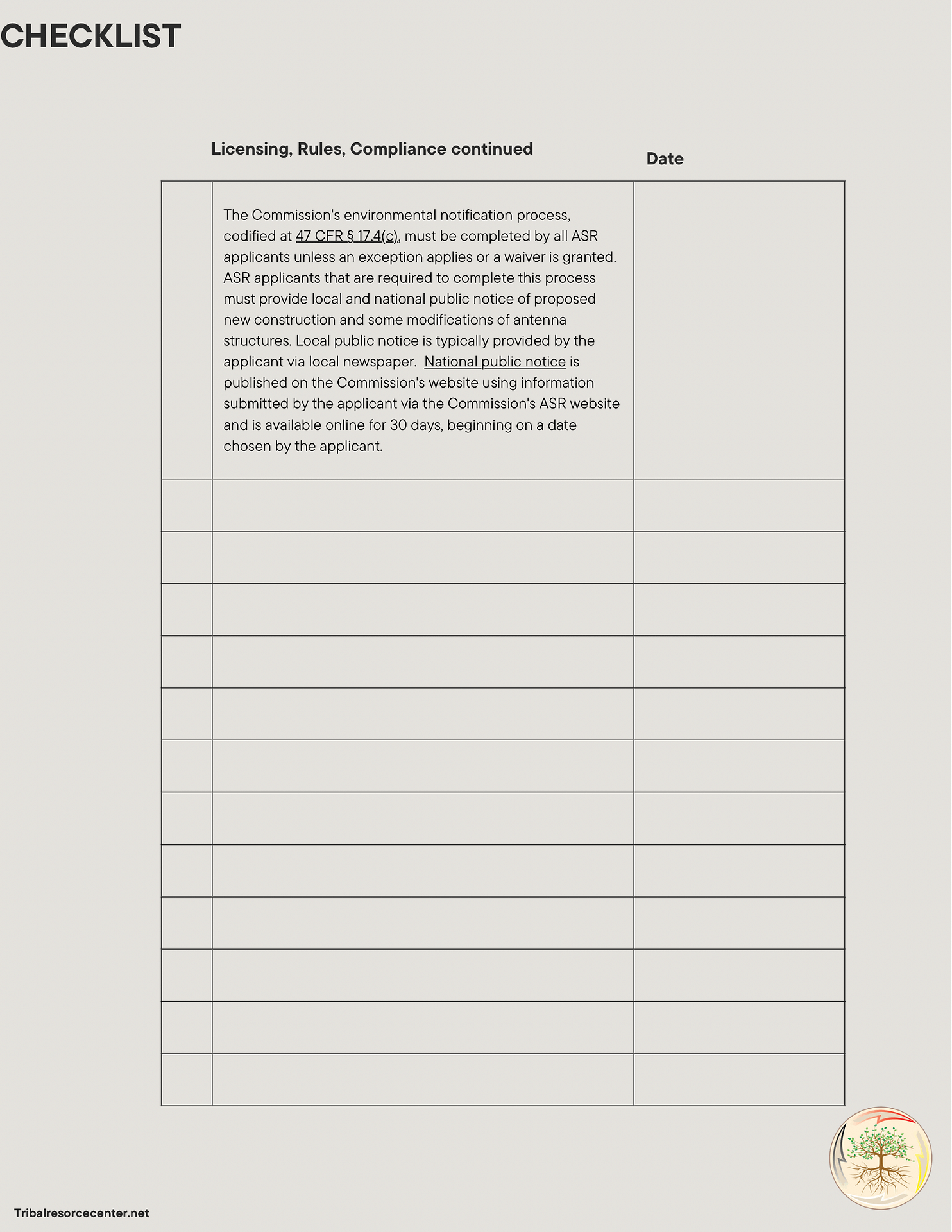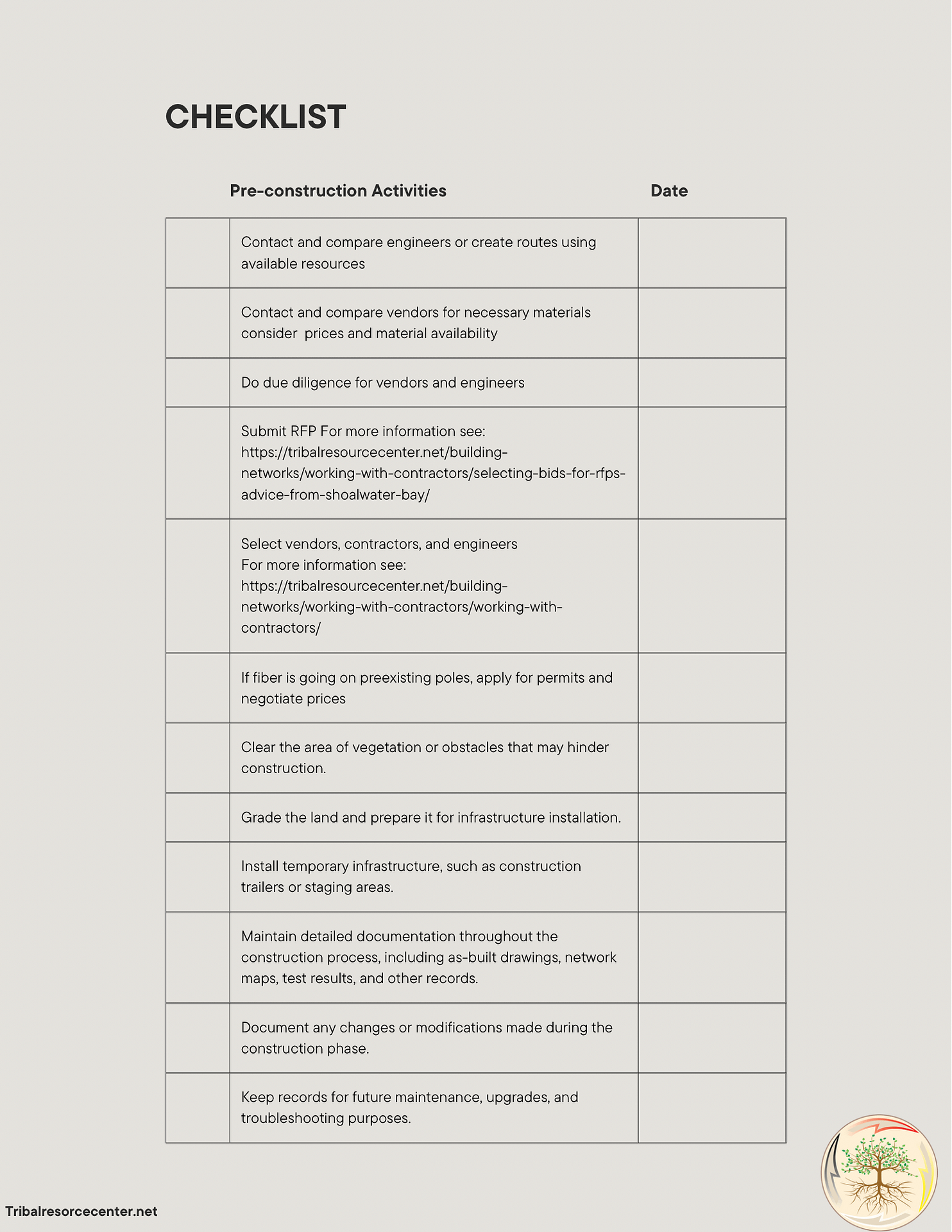Broadband construction processes can vary depending on the specific project and location, but here is a general outline of the key steps involved:
- Project Planning and Design:
- Identify the target area for broadband coverage.
- Conduct a feasibility study to determine the viability of the project.
- Create a detailed plan for the network layout and construction, including the type of technology to be used (fiber optic, cable, wireless, etc.).
- Permitting and Regulatory Compliance:
- Obtain necessary permits and approvals from local authorities and regulatory bodies.
- Comply with local regulations, codes, and environmental requirements.
- Obtain right-of-way permissions to access public and private property.
- Site Preparation:
- Clear the area of vegetation or obstacles that may hinder construction.
- Grade the land and prepare it for infrastructure installation.
- Install temporary infrastructure, such as construction trailers or staging areas.
- Infrastructure Installation:
- Lay the groundwork for the broadband network, such as trenching or boring to install conduits, ducts, and fiber optic cables.
- Install equipment cabinets, distribution points, and network interface devices.
- Deploy wireless access points or towers, if applicable.
- Splicing and Termination:
- Splice fiber optic cables together and terminate them at various points along the network.
- Install connectors, adapters, and splitters as needed.
- Test the connectivity and signal strength of the fiber optic network.
- Testing and Quality Assurance:
- Conduct thorough testing to ensure the network is functioning as intended.
- Test the signal strength, data transmission, and network performance.
- Identify and rectify any issues or defects in the network.
- Activation and Service Provisioning:
- Connect the broadband network to the broader network infrastructure.
- Configure and connect customer premises equipment (CPE) to enable broadband services.
- Activate and provision broadband services for customers.
- Documentation and Record-Keeping:
- Maintain detailed documentation throughout the construction process, including as-built drawings, network maps, test results, and other records.
- Document any changes or modifications made during the construction phase.
- Keep records for future maintenance, upgrades, and troubleshooting purposes.
It’s important to note that adherence to industry standards and best practices, as well as compliance with local regulations, is crucial throughout the broadband construction process to ensure the quality, reliability, and safety of the network.
Although each construction process is different, the following checklists offer simplified guidance on some of the activities required during the process:








